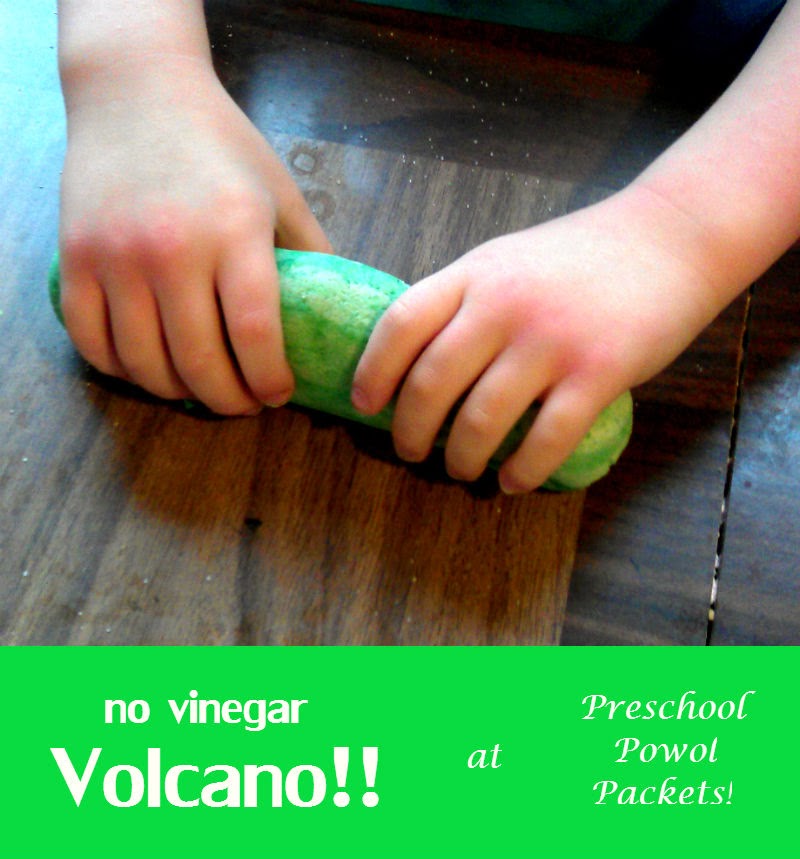No-Vinegar Volcano Science Experiment
This no-vinegar Volcano Science Experiment is so fun, you'll want to repeat it over and over and over...
First of all, we love science. Secondly, we love fizzing, reacting science projects. Thirdly, we love play dough. Fourthly, we love sensory play. And finally, we just started talking about Uganda, a country in Africa surrounded by mountains with volcanoes near its southern border! Of course, we would make fizzing play dough volcanoes!!
The scientific process came into play even more when my 1st-grade daughter suggested we make volcanoes without vinegar. I reminded her of our Elephant Toothpaste experiment (which is the most popular post on this entire blog!) and mentioned that we still had some 6% hydrogen peroxide that was getting to be quite old. Hydrogen peroxide naturally breaks down into water and oxygen, so I wasn't sure there would be enough left to make a good reaction. "Well," my daughter exclaimed, "that's why it is an experiment!"
We started by making play dough to build our volcano. You can use our super-easy recipe too:
1. Dump a can of salt into a bowl.
2. Add about as much white four as you have salt.
3. Add 3-4 tablespoons oil.
4. Add water, about 1/4 cup at a time, until the dough is moist enough to mold and hold its shape.
5. Add food coloring.
No measuring for this project!! Once the dough holds itself together, let the kids work the color in and play with it. My preschoolers love all kinds of play doughs! Plus, squeezing, punching, and bending the dough is a great workout for those little finger muscles that will soon be writing and cutting!
When your preschoolers are done playing with the dough, let them build the volcano around a vase or water bottle. Many of the volcanoes in Uganda have lots of plants growing on them, so the kids wanted to make our volcano green!
This is more great fine motor practice and a chance for the preschoolers to work with each other as they build a project together.
Finally, they were happy to present their volcano...ready for an eruption!!
At this point, we added some cut up egg cartons, left over bits of play dough, and some salt to the inside of the volcano. The kids cleverly pointed out that sometimes not all the rocks are melted inside a volcano and whole chunks can come out during an eruption.
Uganda has both active and non-active volcanoes, so everyone was excited to make ours erupt!
Next came the big moment: creating an eruption without vinegar! Click here to read the famous Elephant Toothpaste post, or keep reading to see how we made this volcano!
You will need warm water, yeast, 6% hydrogen peroxide, dish soap, and food coloring.
First, mix about 2 tablespoons warm water with 1 teaspoon yeast in a cup and set it aside.
Next, pour about 1/2 cup 6% hydrogen peroxide into the volcano. Add a big squirt of dish soap and some red food coloring (or whatever color you want in your eruption).
Check your yeast to see if it is starting to grow. If it is, quickly pour it into the volcano and enjoy the reaction!

Our hydrogen peroxide was still in great shape! It had dissociated significantly, and it behaved more like 3% hydrogen peroxide...which still makes a super fun volcano. (We may have to pick some more 6% hydrogen peroxide up soon, though, because that is one of my all-time favorite reactions!) We also noticed that the "explosion" carried the rocks and other materials right out of the volcano.
We talked about mountain and volcano structure, and then let everyone dig in to another sensory experience...soap covered play dough:
For a detailed explanation of the science behind the no-vinegar volcano, click over to the Elephant Toothpaste post. Before you go, though, I will answer the most common questions that this project brings up:
* Yes, the foam is safe to touch...unless your kiddos have sensitive skin. Hydrogen peroxide separates into water and oxygen. They mix with the dish soap to make the bubbles. This is no more dangerous for their skin than soapy water.
* You can get 6% hydrogen peroxide for this science experiment online, at a beauty store (look for 20 Volume Clear Developer), or in science supply stores. I will put Amazon affiliate links at the bottom of this post.
* No, your children should not touch the hydrogen peroxide before it mixes during this science project. Please remember everything on this blog is meant to be done with close adult supervision. If your children cannot follow directions, you may want to try a different activity. :)
Happy Educating, Carla
I may share at any of these parties!
















Comments